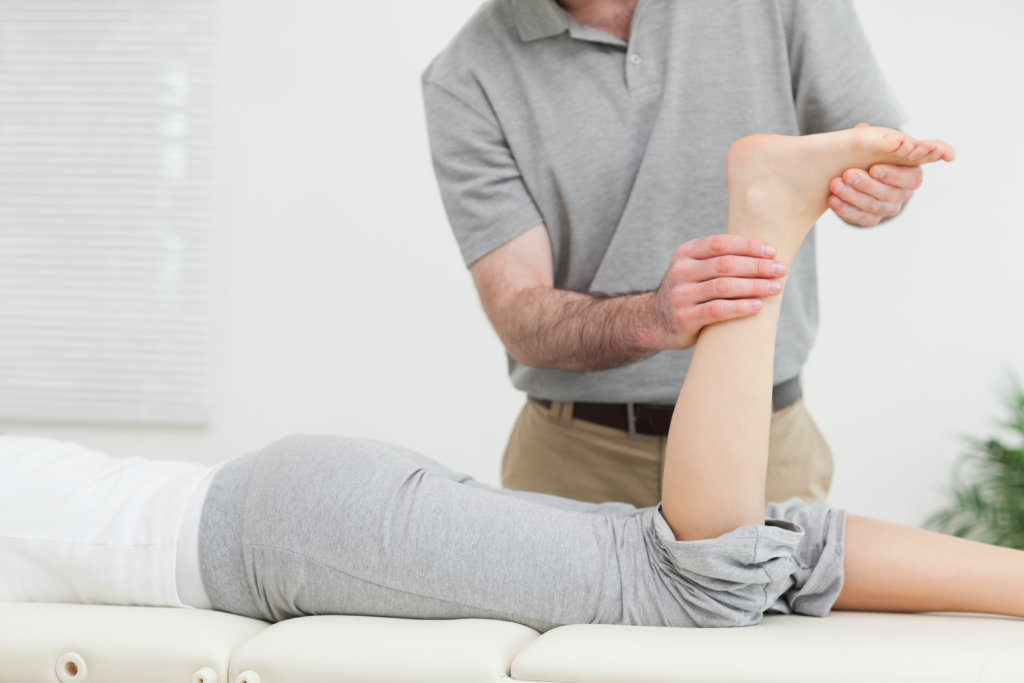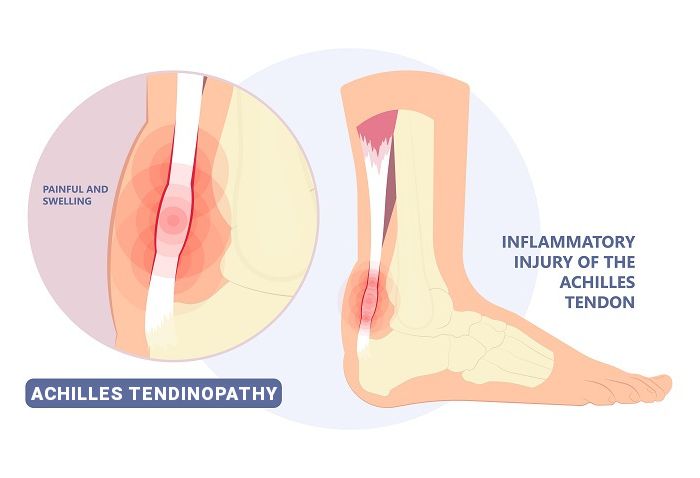Achilles Tendon Problems and Common Treatment Options
The Achilles Tendon is the band of tissue that attaches the calf muscle to the back of the heel bone. It is located behind the ankle and is visible as a tight, cord like structure. The posterior tibial tendon is one that passes down the back of the leg, and is not located that far from the Achilles tendon. This tendon is extremely important for walking and performing athletic activities, as it is responsible for your ability to push off with your feet and stand on your toes. Therefore, any problem or pain in the Achilles Tendon needs to be addressed with proper treatment quickly and appropriately.
Achilles Tendonitis
Achilles tendon pain (commonly referred to as Achilles heel pain) is usually caused by Achilles tendonitis. This means inflammation or swelling of the Achilles tendon, and is usually the result of a strain or overuse. Many times, the calf muscles and/or the Achilles tendon become too tight, which causes a strain of the tendon. This causes pain behind the ankle, in the tendon itself and in the heel bone where the tendon attaches. For most cases, patients can find relief by stretching the calf and Achilles tendon, which is an important part of the treatment for pain in the achilles tendon and heel. Your foot and ankle specialist might also need to immobilize your ankle in a cast or boot, dispense a night splint, prescribe anti-inflammatory medicines, recommend orthotic insoles, or physical therapy.
Achilles Tendinopathy
When Achilles tendonitis lasts for a long time, it can lead to degeneration of the Achilles tendon, or Achilles tendinopathy. This occurs in the same area of the tendon, behind the ankle in the “Watershed Region” of the Achilles, where there is not much blood flow to the tendon. In this area, micro-tears can occur, which do not heal well as you age and can lead to degeneration or weakening of the tendon. This causes more heel pain and swelling and usually can be seen and felt as great thickening of the Achilles behind the ankle and at the back of the heel and can sometimes also affect the posterior tibial tendon. Diagnosis is based on a MRI to determine the extent of inflammation, tearing or degeneration present in the tendon. Achilles tendonitis treatment, aimed to address pain and degeneration of the Achilles tendon, is long term immobilization followed by the same treatments mentioned above. Stem cells, PRP or Amniotic Fluid Injections can accelerate healing of this condition substantially and reduce the likelihood of recurrence. Surgery may be necessary as a last resort for treatment to remove the degenerated tissue, repair the Achilles tendon and address pain.
Haglunds Deformity or Heel Spur
In some cases, a bony prominence develops on the back of the heel where the Achilles tendon attaches called a Haglunds Deformity or Heel Spur.

This can cause even more pain and often requires surgical treatment to remove the sharp bone, repair and reattach the tendon. Lengthening of the Achilles tendon, the posterior tibial and/or the calf muscle may also be indicated in severe cases in order to prevent the heel pain from coming back.
Ruptured (Broken) Achilles Tendon
An Achilles tendon rupture, sometimes referred to as a torn or broken Achilles tendon is the worst form of injury to this area of your foot. If this tendon or your posterior tibial tendon has ruptured, it is broken or torn into two pieces, usually in the area of a weakened or degenerated tendon, as mentioned above. This usually occurs during sports or vigorous activity, but a ruptured or broken achilles tendon can also occur from stepping the wrong way if your structure is weak. Treatment of a partially torn or broken Achilles tendon may consist of casting and non-weight bearing, but complete ruptures may require surgery to repair the tendon in order to regain full function of the foot and address the pain.
ACHILLES TENDON
Pain in the Achilles tendon and heel should not be ignored. Contact the podiatrists at Certified Food & Ankle Specialists for an evaluation and the appropriate treatment plan if you notice any pain in your heel. If caught early on, most conditions are treatable without surgery.



